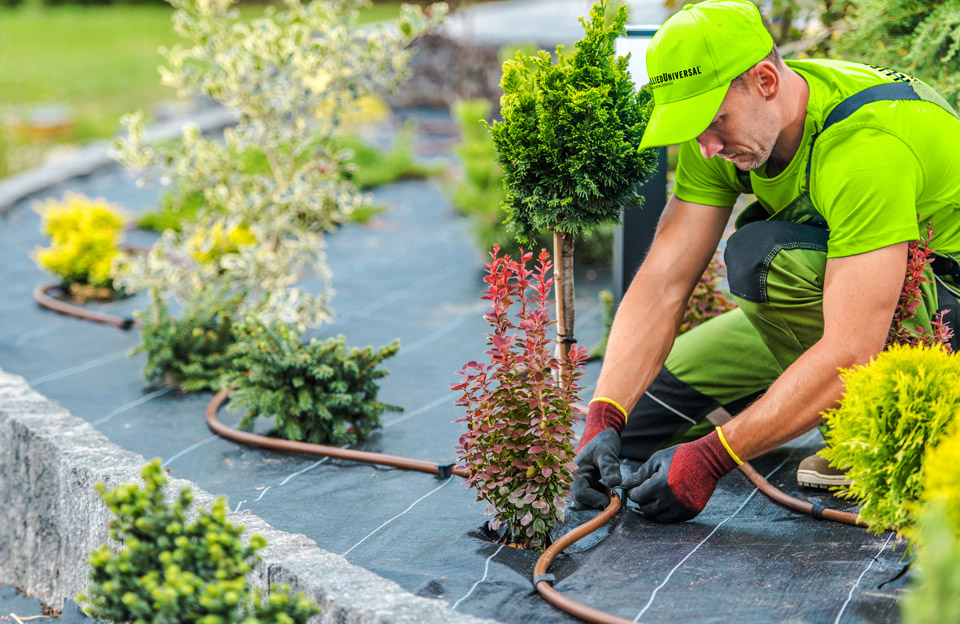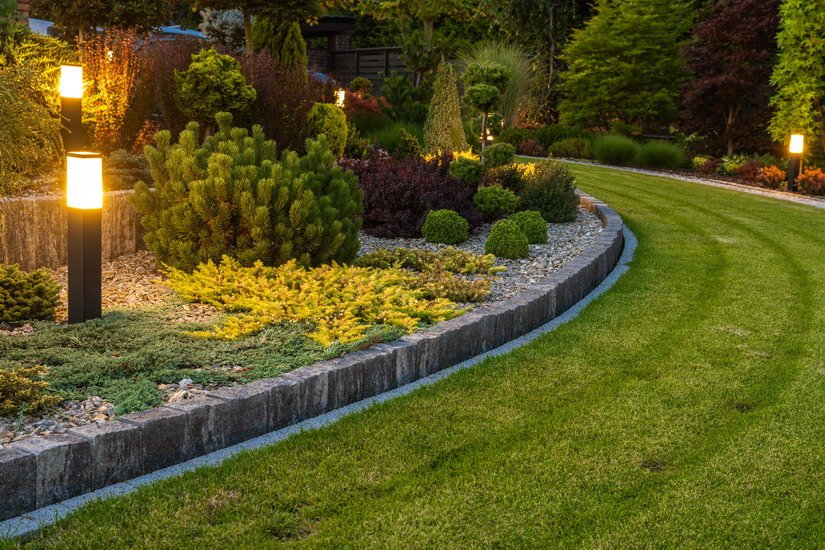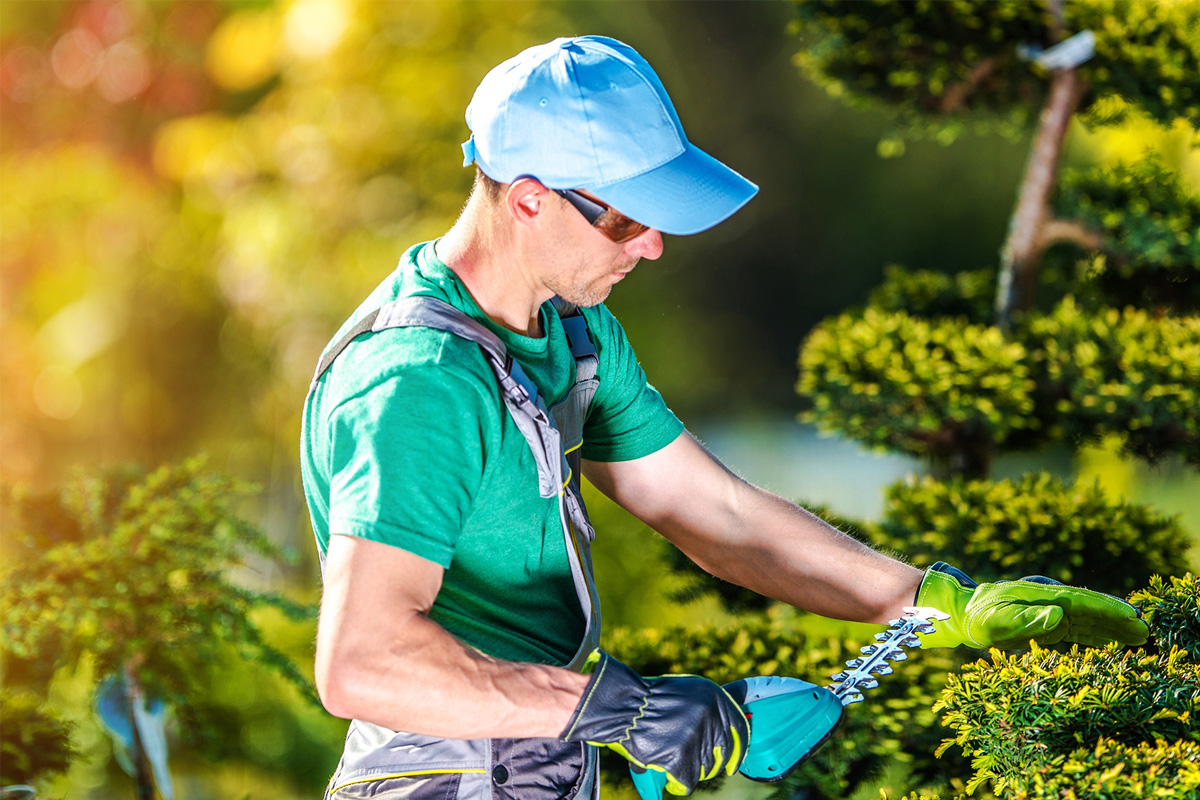Understanding the Comprehensive Range of Works in Expert Landscape Design Services
The extensive scope of professional landscaping services incorporates a selection of basic aspects - landscaping. It consists of landscape style principles, plant choice, and hardscaping attributes. In addition, it addresses irrigation systems and upkeep strategies. Each facet plays a crucial role in creating useful and visually pleasing outdoor areas. Recognizing how these elements function with each other can expose much about the art and science of landscaping. However, the journey into this elaborate field is just starting
Landscape Style Concepts
Reliable landscape layout principles are vital for producing unified exterior spaces that boost both aesthetic allure and performance (Learn More). These principles lead the arrangement of elements within the landscape, ensuring a cohesive visual experience. Trick parts consist of balance, which disperses aesthetic weight evenly; percentage, which relates the dimension of different elements to each various other and the room; and unity, which produces a sense of wholeness through consistent styles and materials

Plant Choice and Installation
In the domain of specialist landscaping, plant option and setup play an essential role in accomplishing a flourishing garden. Highlighting indigenous plant advantages, seasonal considerations, and the certain dirt and sunshine demands of each species ensures a lasting and aesthetically pleasing landscape. Careful preparation in these locations not just boosts biodiversity yet also advertises lasting environmental health.
Indigenous Plant Advantages
Why should house owners think about native plants for their landscape design tasks? Native plants provide countless benefits that boost both appearances and ecological sustainability. They are well-adapted to regional climates, calling for less water and maintenance contrasted to non-native varieties. This resilience reduces the requirement for chemical plant foods and chemicals, advertising a much healthier environment. In addition, native plants give habitat and food for neighborhood wild animals, including pollinators, which can boost biodiversity in domestic areas. Their experience with regional soil and weather additionally brings about much better development rates and long life. By selecting indigenous plants, home owners not just create visually enticing landscapes but likewise contribute to ecological preservation, making a favorable influence on their regional setting. Subsequently, native plants stand for a clever option for landscaping projects.
Seasonal Plant Considerations
Property owners who have welcomed native plants in their landscaping can even more boost their outside rooms by taking into consideration seasonal plant selections. By integrating plants that grow in specific periods, they can create dynamic and visually appealing landscapes throughout the year. Springtime may usher in dynamic blooms like tulips and daffodils, while summertime can showcase rich foliage and vivid perennials. Autumn introduces a combination of warm tones with asters and goldenrods, while winter can be accentuated with evergreens and decorative turfs for appearance. Expert landscapers often suggest picking plants that not only enhance existing native varieties yet additionally provide year-round passion and support neighborhood wild animals. This thoughtful strategy to seasonal plant choice ensures a continuously evolving and lasting garden setting.
Soil and Sunshine Demands
Effective landscape design rests on recognizing the certain soil and sunlight demands of plants. Different species thrive under varying problems, needing a cautious evaluation of both factors during the option procedure. Soil types, such as sandy, clay, or loamy, impact drainage, nutrition schedule, and root advancement. Additionally, pH degrees can influence plant wellness, necessitating dirt screening to establish suitability. Sunlight needs vary substantially; some plants flourish in full sunlight, while others favor complete or partial color. A specialist landscaping company thinks about these components to guarantee peak growth and aesthetic allure. By lining up plant selections with the environment's particular characteristics, landscapes can achieve sustainability, strength, and visual consistency, eventually leading to effective plant facility and long-term maintenance.
Hardscaping Features and Construction

While landscaping typically evokes photos of lavish greenery and vibrant blossoms, hardscaping functions play a vital function in specifying outside rooms. These components, that include patios, walkways, preserving walls, and decorative stonework, offer framework and capability to gardens and backyards. Hardscaping utilizes materials such as concrete, wood, stone, and brick, enabling varied styles that complement the all-natural landscape.
The building and construction of hardscaping functions needs cautious planning and implementation to guarantee longevity and visual appeal. Professionals examine website conditions, water drainage, and spatial connections to develop cohesive outside settings. Appropriate installment methods are important, as they avoid concerns like erosion and shifting gradually.
Integrating hardscaping not only boosts the visual rate of interest of a home but additionally promotes exterior activities, making it a basic facet of comprehensive landscaping services. Eventually, thoughtful hardscaping adds to both the functionality and elegance of exterior spaces.
Irrigation Solutions and Water Administration
Effective irrigation systems and water monitoring are essential components of expert landscaping, as they assure that plants obtain the necessary hydration for ideal development. These systems can differ from simple drip irrigation arrangements to innovative computerized lawn sprinkler systems, developed to meet the specific needs of varied landscapes. Proper water monitoring not only optimizes water usage, minimizing waste, but additionally enhances plant health and minimizes illness risks.
Landscaping experts examine various aspects, consisting of dirt kind, plant species, and neighborhood environment, to develop customized irrigation options. Additionally, incorporating rainwater harvesting strategies can further improve sustainability and performance. Routine upkeep of irrigation systems is necessary to maintain functionality and prevent leakages, which can cause water loss and enhanced costs (Learn More). Inevitably, a properly designed watering system plays a pivotal role in maintaining the visual allure of outdoor spaces while promoting environmental stewardship within expert landscaping methods
Yard Care and Upkeep Methods
Grass care and upkeep methods are essential for achieving a rich, healthy backyard that enhances the general landscape. These methods incorporate various techniques focused on advertising excellent growth and aesthetic charm. Normal mowing is necessary, as it encourages thick, also development while preventing weeds from establishing. Additionally, proper fertilization supplies needed nutrients, with applications tailored to the specific lawn kind and dirt conditions.
Watering practices should concentrate on deep, seldom irrigation to encourage origin advancement, while aeration enhances dirt framework and promotes nutrient absorption. Bug and condition administration is likewise important; recognizing problems early enables effective therapies that decrease damage.
Ultimately, overseeding can renew slim or damaged lawns, enhancing thickness and color. By applying these targeted yard treatment techniques, landscaping experts can ensure that backyards continue to be healthy and balanced and lively throughout the periods, substantially contributing to the overall beauty of the property
Seasonal Landscape Care and Maintenance
As the seasons adjustment, correct landscape care ends up being important for maintaining the health and wellness and beauty of exterior spaces. Each period offers distinct challenges and needs. In spring, landscape specialists concentrate on trimming, planting, and feeding to encourage growth. Summer demands regular watering, weed control, and parasite management to secure freshly established plants.

Throughout the year, seasonal landscape maintenance assurances that outside locations remain healthy and aesthetically enticing. Specialist services can offer customized maintenance strategies that adjust to the details requirements of each period, allowing homeowner to take pleasure in lively landscapes year-round. Overall, seasonal care is a vital aspect of specialist landscaping that advertises longevity and visual worth.

Lasting Landscape Design Practices
A growing number of building owners are embracing sustainable landscaping methods to create eco-friendly exterior rooms. These practices focus on preserving sources, enhancing biodiversity, and decreasing environmental impact. Native plants are usually chosen for their reduced water needs and compatibility with local ecosystems, reducing the demand for chemical fertilizers and pesticides. Rainfall gardens and permeable paving are employed to handle stormwater drainage, advertising groundwater recharge and minimizing disintegration.
Moreover, lasting landscape design integrates organic gardening techniques that prioritize dirt wellness and promote all-natural pest control. Efficient watering systems, such as drip irrigation and rainwater harvesting, aid enhance water usage. Additionally, landscape developers significantly support for making use of recycled products, such as redeemed timber and rocks, to reduce waste. By taking on these lasting methods, homeowner not only add to ecological conservation however likewise create cosmetically pleasing atmospheres that can thrive with marginal maintenance.
Often Asked Inquiries
How Long Does a Landscaping Project Normally Require To Complete?
Typically, a landscape design job can take anywhere from a few days to a number of weeks to finish, relying on the task's size, intricacy, and design requirements. Variables such as weather condition and resource availability likewise influence timelines.
What Elements Impact the Cost of Landscaping Services?
Various variables affect landscape design service costs, consisting of project dimension, layout intricacy, worldly high quality, labor expenses, geographic area, and seasonal demand. Each aspect contributes uniquely to the general monetary demands of a landscaping job.
Are Landscape Design Solutions Available Year-Round?
Landscaping services are typically available year-round, although schedule may vary based upon area, seasonal climate condition, and details solution offerings. Some services may be limited throughout severe climate or off-peak periods.
Do Landscaping Companies Deal Service Warranties on Their Job?
Many landscaping firms do offer service warranties on their job, which can differ in length and protection. Clients are motivated to ask regarding specific terms, ensuring they comprehend what is assured and any type of problems that apply.
Can I Design My Landscape Without Professional Help?
Yes, individuals can create their landscapes without expert assistance. Nonetheless, they might lack proficiency in plant choice, layout, and environmental factors to consider, possibly bring about much less reliable styles that could need pricey modifications later on.
In the domain of expert landscape design, plant option and installment play an essential function in attaining a prospering yard. Homeowners who have actually accepted native plants in their landscape design can additionally boost their look at this web-site exterior spaces by taking into consideration seasonal plant selections. Effective landscaping pivots on comprehending the specific soil and sunshine requirements of plants. Effective irrigation systems and water monitoring are essential components of specialist landscaping, as they ensure that plants obtain the necessary hydration for suitable development. Landscaping professionals evaluate different variables, including dirt kind, plant varieties, and neighborhood environment, to establish tailored watering remedies.